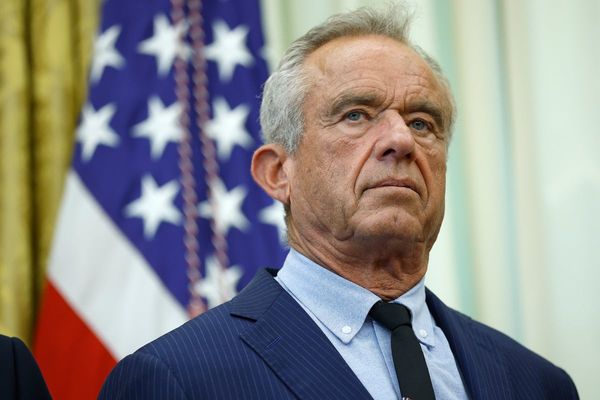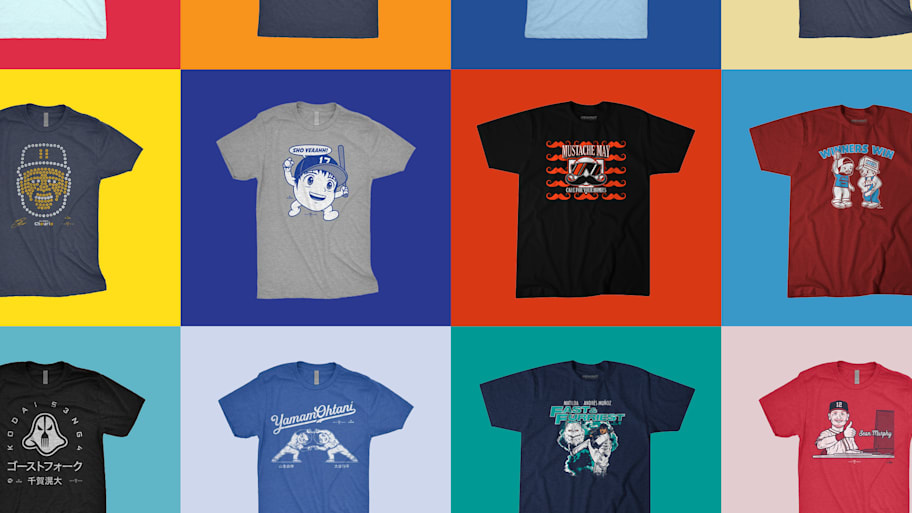
It happens on a near-weekly basis these days: Something exciting happens on the field at a baseball game. The incident goes viral on social media. The small collection of companies equipped to capitalize on the moment gets to work. The players arrive at the ballpark the next day to find a T-shirt commemorating the episode draped across the backs of their chairs.
Lakers forward LeBron James has the Met Gala. Patriots wide receiver Stefon Diggs has Milan and Paris Fashion Weeks. Baseball players have the T-shirt Industrial Complex.
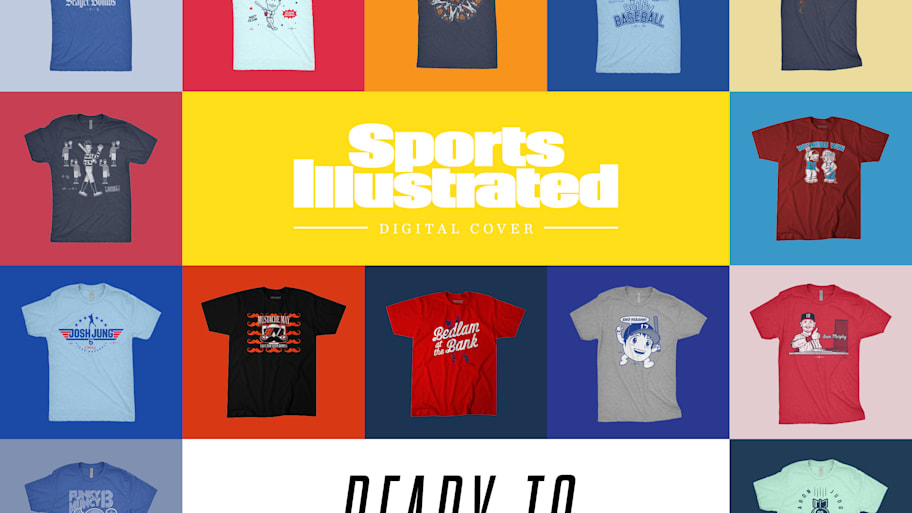
The ecosystem is virtually self-sustaining at this point: The companies—the two most popular are BreakingT and Rotowear—mail the shirts to the players, at no cost to them; the players wear the tees on TV, serving as free marketing; fans see them and buy them. Baseball offers 162 batting practice sessions a year, plus several times that many on-camera postgame interviews, which is a lot of chances for T-shirt exposure. Indeed, Rotowear founder Kenny Tevelowitz says he has never run a paid ad. (“Somebody that is more business savvy would look at that and be like, ‘You’re a moron,’ but it’s how I’ve been doing it,” he says with a laugh.) BreakingT and Rotowear—founded in 2014 and ’17, respectively—both have galleries of major leaguers in their T-shirts on their home pages.
The team-wide T-shirt idea itself dates back at least a decade. In 2013, the Blue Jays wore RAISE THE BAR shirts during batting practice to encourage fans to vote reliever Steve Delabar into the All-Star Game. (The campaign worked.) In ’14, Royals pitcher Jeremy Guthrie sported a THESE O’S AIN’T ROYAL T-shirt at his postgame press conference after Kansas City beat Baltimore in Game 3 of the ALCS. (He later apologized, saying a fan had given him the shirt and he was not familiar with the reference to Chris Brown’s hit “Loyal,” which includes the lyric, “These hoes ain’t loyal.”) In ’16, the Cubs donned shirts emblazoned with manager Joe Maddon’s motivational phrase, TRY NOT TO SUCK.
But most of those initiatives were player- or fan-driven; often clubhouse attendants placed the orders at local print shops. Most people date the shirtaissance to Sunday, June 9, 2019, when Max Muncy clobbered a Madison Bumgarner fastball 426 feet into McCovey Cove. “Don’t watch the ball,” the Giants’ ace barked. “Run.” Muncy rolled his eyes. “If you don’t want me to watch,” the Dodgers’ first baseman said, “You can go get it out of the ocean.” By Monday at noon, both BreakingT and Rotowear had T-shirts for sale referencing the moment. A day later, they were on their way to the L.A. clubhouse, where players eagerly wore them. Both websites nearly crashed under the weight of all the sales.
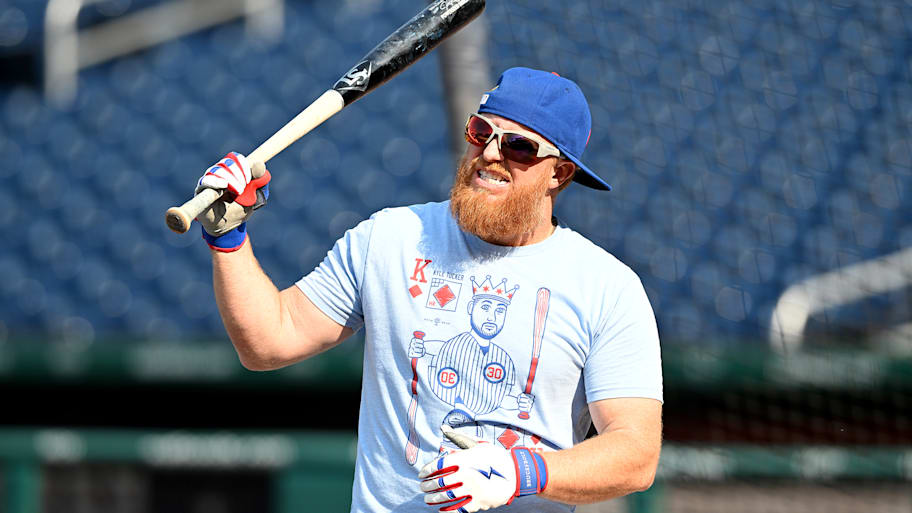
“After that, I was like, ‘I’m gonna quit my job and try to do this full-time,’ ” says Tevelowitz, who was formerly an art director at an advertising agency.
The companies decline to share revenue figures, but BreakingT president Jamie Mottram fondly remembers their “Slam Diego” model—a reference to Padres broadcaster Don Orsillo’s call when the team became the first club in history to hit grand slams in four straight games. Shortstop Fernando Tatís Jr. saw the shirt on BreakingT’s website and mentioned to the company that he wanted to wear it on the following night’s SportsCenter. There was just one problem: The shirts didn’t actually exist yet. So BreakingT sent the digital file to a local San Diego print shop and had a courier drive it to Petco Park just in time for the ESPN spot. Mottram says the design brought in more than a million dollars in sales.
“It’s always hit or miss—in some ways, quite literally,” he says. “If a player is not hitting or the team isn’t winning, it’s not a great look to wear the fun T-shirts.”
Not every shirt makes it to batting practice. A few players declined to wear T-shirts taking shots at the Astros’ illegal sign-stealing scandal. More often, team leadership bars designs from leaving the clubhouse.
“Profanity,” says Guardians field coordinator Kai Correa, a former Giants bench coach. “Hunter Pence made a few that you just can’t wear out, like WIN, WIN, WIN, WIN, F— EVERYTHING ELSE. The guys push the limits with the innuendos. There’s always, like, rockets or bananas.” (For special orders, by the way, the players do pay.) In 2021, after San Francisco finished in the top three in several defensive metrics, the clubhouse dreamed up a THAT GIANT D T-shirt but was overruled. “[By] some adult in the room,” Guardians associate manager and former Giants bullpen coach Craig Albernaz scoffs.

Sometimes the shirts are such inside jokes that they make no sense even to their designers. In 2023, the Yankees wore Rotowear shirts with a puking emoji and the text I’M SICK ABOUT IT.
“I don’t know what that was about,” says Tevelowitz. Catcher Kyle Higashioka, now with the Rangers, explains that pitcher Jameson Taillon used to say that a lot: “We just started saying it over and over. That was our team saying.” Well, they can’t all be winners.
Technically, by the way, this is all against the rules. The shirts themselves are fine—the companies are licensed by the players’ union, which allows them to use player names and likenesses, but not team logos or even motifs such as pinstripes. The players really aren’t supposed to wear them at work, though. MLB’s uniform regulations state that “all Players are required to wear only Club-issued apparel, outerwear and equipment while on the field during batting practice and while in any in-stadium interview room up to 30 minutes following games.” But the league, presumably occupied with more serious issues, rarely enforces the rule, and most players don’t know they are even breaking it.
As for the more informal laws, not everyone agrees, especially when it comes to a tee bearing your own face. The Yankees are divided. “I would never rock my shirt,” says left fielder Cody Bellinger. “I think last year I wore my shirt every day,” says infielder Jazz Chisholm Jr.
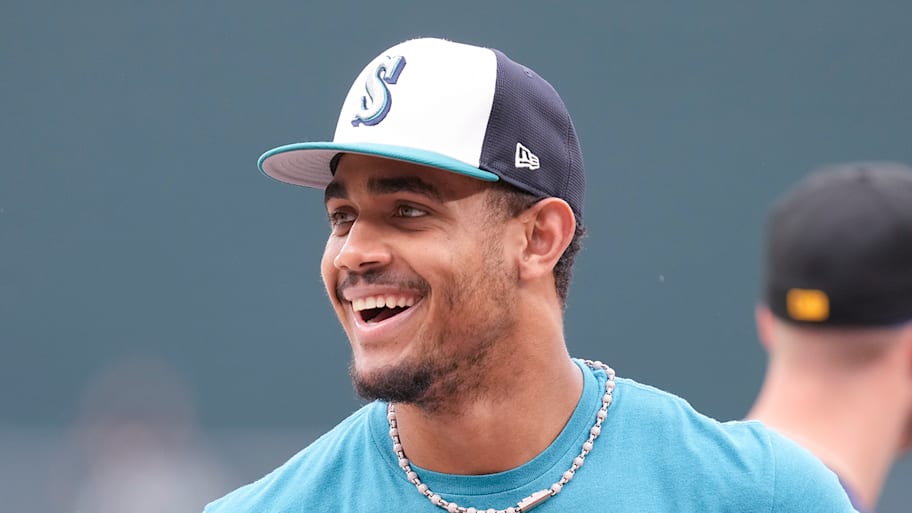
But everyone agrees you’re allowed to wear your teammates’ shirts—and most of them do. On any given day, the majority of ballplayers head to batting practice in a shirt that appeared at their locker as if by magic. In part, that’s laziness: Most of the players interviewed for this story conceded that around 25% of their wardrobe is free T-shirts. Sometimes it’s a sense of duty: “I make a point to wear them [in interviews],” says Higashioka. “Just to help them out. It’s not like they’re sending them to us to wear them in private.” Sometimes it’s genuine glee at a creative design: When Chicago-based Obvious Shirts debuted FAILED STARTER tees in 2021, most of the Cubs’ relievers requested them immediately. But mostly, it’s a nod to a season that can feel interminably long.
“Throughout the course of eight months, you have to find little things to celebrate,” says Muncy.
Every time you go to a baseball game, the saying goes, you have a chance to see something you’ve never seen before. And the next day, you just might see it again, on a T-shirt.
This article was originally published on www.si.com as MLB Players Are Bending the Rules to Support the Sport’s New Fashion Trend.
